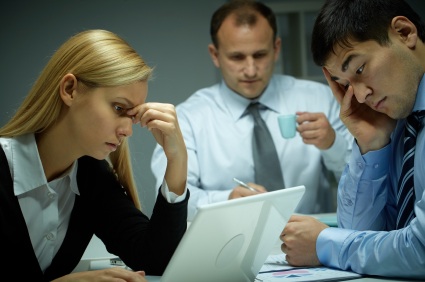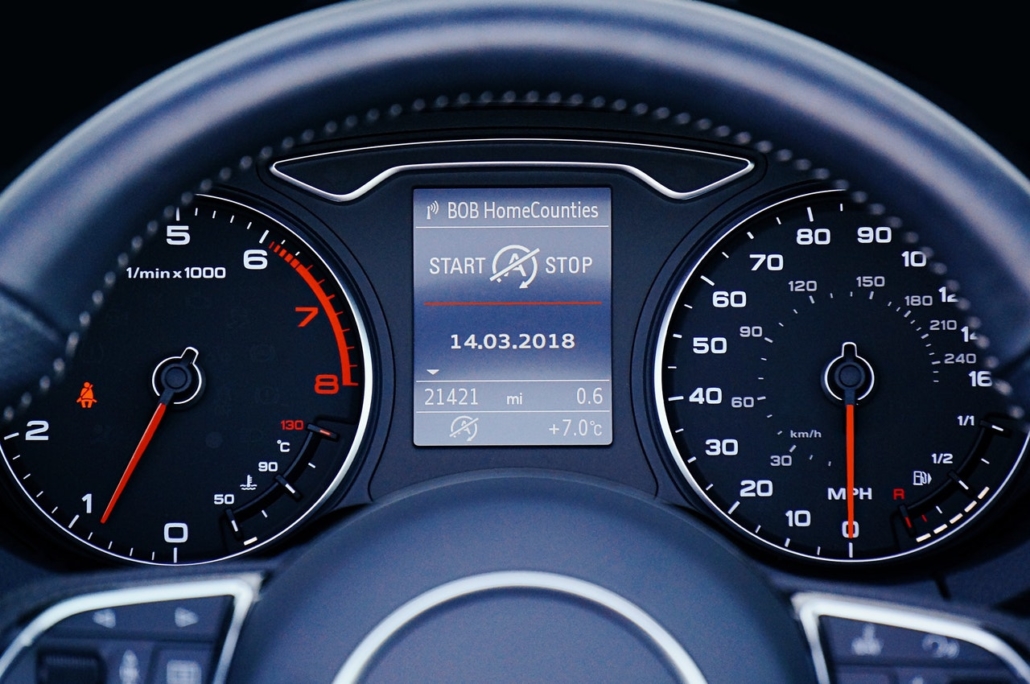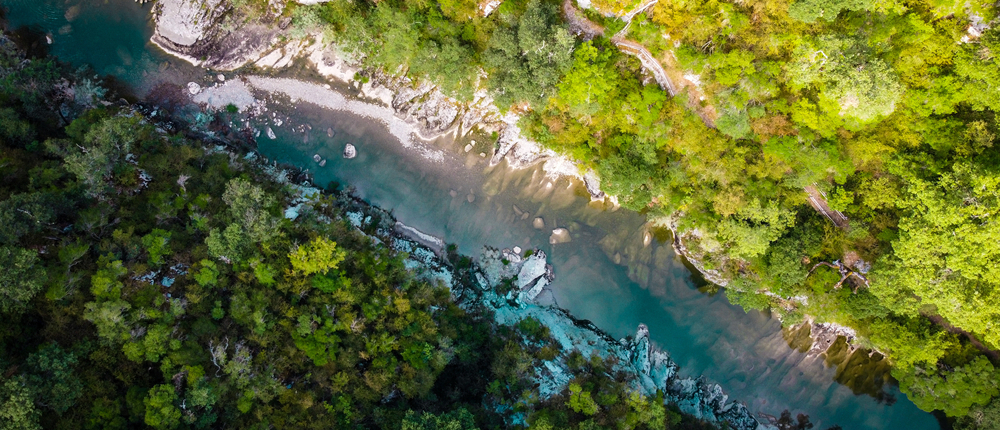As we live through another “once in a century” hot summer, it’s time we talk about the changes we must make to address the climate crisis. I know these conversations are challenging. That’s why I am re-publishing my blog post on how change management can help us take action.
—
Social media, newspapers, news feeds, television — anywhere you look, you’ll find something about climate change and the devastating effects around the world. Close to home, shifting weather patterns — record-breaking floods in Ontario, tornadoes in the mid-western U.S., droughts and devastating wildfires along the west coast of the U.S. and Canada — have created a stark reality.
And yet, the debate about whether global warming and climate change are real continues. For someone like me, who looks to science to guide my thinking, it’s hard to understand how there can be any debate.
But what if we shift the perspective? Instead of an “I’m right, you’re wrong” debate, what if we shift to a “readiness for change” perspective?
What happens is this: the conversation opens us up for new understanding and learning, and the sense of conflict and defensiveness decreases. Instead of a debate about the reality of climate change, we can have a conversation about the effects our climate has on our lives and the measures needed to manage those effects now and in the future.
Here’s how it works.

The Continuum of Change
The Continuum of Change is a normal, predictable, five-phase pattern we all move through when confronted with any change. It applies to all of us and every change. I like the Continuum of Change because it gives us a vocabulary and a way of talking about and assessing readiness for change without judgement and with less conflict. And because all of us move through a similar process, it is a familiar, relatable experience. In our Living and Leading Change Leader’s Certificate Course, we teach leaders how to use the Continuum to frame conversations and build readiness for change.
Before we look at the five phases, there are three things to keep in mind:
- No phase can be skipped, and we move through the phases in order
- The Continuum is linear (see the first point), but we move through the phases more like a dance than a march. This means we may progress through a phase then, as a result of an external or internal circumstance, slip back to an earlier phase. However, each step of the dance enables us to find a place of comfort within the discomfort of change.
- Our progress through the Continuum isn’t time sensitive or personality constrained but it is change sensitive. This means our journey may be different for each change we encounter. We may move quickly through each phase for some changes, but with other changes, we may find ourselves hanging out in one phase for a long period of time.
Now, let’s take a look at each phase of the Continuum as it relates to climate change readiness.
Phase 1: No Problem
I call this phase the “if it’s not broke, don’t fix it” phase. When we are here on the Continuum, we don’t see a need for change or understand the problem or why anything needs to be different. Instead, we see disruption without rationale.
 Concerning climate change, a person at this level of readiness likely questions the science. If they do acknowledge global warming as real, they are likely to identify the causes as outside human and industrial activities.
Concerning climate change, a person at this level of readiness likely questions the science. If they do acknowledge global warming as real, they are likely to identify the causes as outside human and industrial activities.
Another characteristic of this readiness level is defending the current state and striving to limit the impact and disruption of the proposed change to our current state. An example of this is the idea of “clean coal.”
Phase 2: Awareness
In this phase, we understand and agree there is a need for change and we often agree on the problem, but we are not yet ready to commit to taking any real action. I call this phase the “all talk, no action phase.”
It is estimated about 50-71% of Americans believe human-caused climate change is real, while 70% of Canadians believe the earth is warming because of human and industrial activity. So the majority is aware, but that doesn’t mean action will follow.
Keri Marie Norgaard, a sociologist at the University of Oregon and author of Living in Denial: Climate Change, Emotions, and Everyday Life, observed this in her research on climate change. As she writes, “The people I met were generally well informed about global warming. They expressed concern frequently, yet this concern did not translate into action.”
Colin Carnal, author of Managing Change In Organizations, called this phase of the change process “the defence,” because a key characteristic of this phase is defensive behaviour — so much so that if pushed into change, we will engage in activities that prove the new condition or state won’t work.
This phase is also associated with high levels of fear and uncertainty because taking action may feel overwhelming and the potential costs (disruption, loss, or risks) of action too high.
Like phase one, in this phase, we are still more aligned with the current state than a future state, which means we will defend our current activities. Norgaard discovered two ways people deal with the emotional dissonance of climate change. The first is to deflect and minimize their role through increased criticism of a country that was performing worse. The second is to minimize the impact that could be made given the country’s small size.
In this phase, we often question the validity of solutions that threaten the current state and may rationalize the problem’s severity or propose an alternative. One example of this is the debate around Canada’s federal carbon tax’s value and ability to address climate change. Alternatives being proposed barely, if at all, move the needle on the status quo. At this phase, people can appear to be moving toward the change, but deeper examination reveals they are really maintaining the status quo.
Phase 3: Discovery
In this phase, we begin to recognize the need for actions that move towards change. The process of letting go of our current state begins as we explore the actions needed to achieve a new reality or state. If phase two of the Continuum is when we gain buy-in for change, phase three is where we begin to develop the commitment to take action.
For example, I am reducing my use of single-use plastics and takeout cups and bringing my own cutlery and mug with me. A small step, yes, but it’s a chance to get into a practice and rhythm that isn’t too painful but moves me towards my desired behaviour.
Companies are also moving towards change. A recent CBC article, “Electricity and water do mix: How electric ships are clearing the air on the B.C. coast,” featured a shipping company that’s exploring the use of hybrid electric vessels and reported that Scandinavia is leading the world with its use of a hybrid car and passenger ferries.
A key characteristic of the third phase is our willingness to test and question the current state. Our sense of self-efficacy is heightened during this phase, and we can see ourselves doing something that moves towards the new state. We start to see options and feel a sense of control. The opportunities and benefits of moving towards something different carry more weight than the risk associated with letting go of the current state.
Norgaard notes that when we live in a state of fear, we lose our ability to imagine. In this phase, our imagination begins to re-ignite, to explore and try out what a new way of living may offer.
Phase 4: Implementation
By this phase, we are actively engaged in the new or desired state’s behaviours and activities. A key characteristic of this phase is our openness to learning. This is when training has the biggest impact and is most likely to result in new behaviours that stick.
Although we are consistently engaging in the new behaviours, they are not yet normalized and can still feel uncomfortable. It’s not unusual to still experience frustration and even anger at the difficulty or inconvenience of a new activity or behaviour.
 For example, a couple of years ago, I purchased a new car with an energy-saving feature: the engine shuts off when you are stopped and idling, even for a very short period of time. Initially, I was frustrated every time it happened, and a little scared it wouldn’t restart, but it restarts seamlessly as soon as I take my foot off the brake.
For example, a couple of years ago, I purchased a new car with an energy-saving feature: the engine shuts off when you are stopped and idling, even for a very short period of time. Initially, I was frustrated every time it happened, and a little scared it wouldn’t restart, but it restarts seamlessly as soon as I take my foot off the brake.
During the past year, for the first time, I noticed the indicator telling me how much CO2 I had saved because of this feature. The CO2 indicator was always there. However, when I was at a lower level of readiness, I couldn’t see it, even though it was right in front of me. Our level of readiness influences our perception of the problem and the opportunities for change.
Phase 5: New Steady State
In this phase of readiness, new behaviours or activities have become normal activities — our habits and ways we engage with our world.
I am old enough to remember the battle in the 1980s to ban leaded gas. I also remember having to specify unleaded gasoline and grumbling about the increased cost when I bought my first new car. Today, unleaded gasoline is the norm. Tomorrow, even cleaner fuels will be normalized.
Increasing the Conversation using the Continuum of Change
The Continuum helps us understand where we are relative to any change. When we know where we are on the Continuum of Change, we can adjust our response to engage others who are at different phases in conversations in ways that are insight building and not conflict ridden.
Understanding the Continuum as a measure of readiness also allows and encourages us to remove the “resistant to change” label from people who are not at the same place as we are on the Continuum. We can be more open to gaining our own insight and understanding without feeling we need to sell others our perspective.
Norgaard says the stakes are very high for climate change denial and believes we are in a moral crisis. In my thinking, then, anything we can do to increase readiness towards making the necessary changes to mitigate the effects of climate change and build a sustainable future is worth talking about.
For more information on how the Continuum of Change was developed, see Launch Lead Live: The Executive’s Guide to Preventing Resistance and Succeeding with Organizational Change
Dr. Dawn-Marie Turner
Turner Change Management-Think Transition: Turn change from a liability to an asset.
This blog post was originally published as “The Five Phases of Climate Change Readiness: How the Continuum of Change Turns a Debate into a Conversation”



